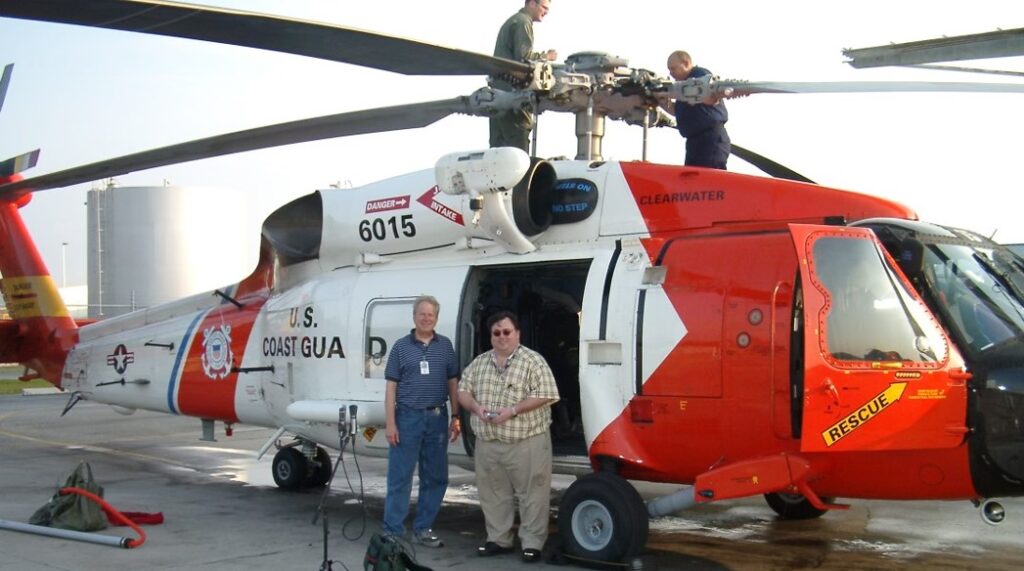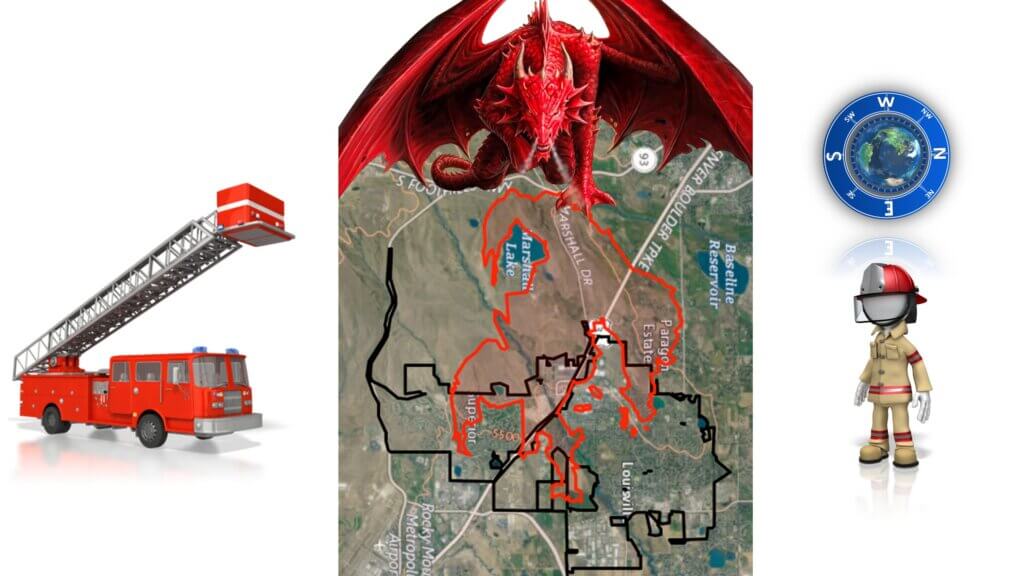Can you hear me now?
This is the second article on the topic of the Marshall fire inspired by Richard Feynman’s statement (after the Challenger disaster): “For a successful technology reality must take precedence over public relations, for nature cannot be fooled.”

Communication is the heart and soul of any successful disaster response—especially fire. Disaster mitigation, prevention, and response requires real-time knowledge of the situation on the fireground, and that is often provided via communications technology. This article proposes to look at these issues through a different lens—or, in this case, the eyes of a special individual.
DJ Atkinson was a remarkable man with a special gift. He was a telecommunications research scientist who worked at the NTIA’s Institute for Telecommunication Sciences labs in Boulder, Colorado. DJ clearly understood that the full effectiveness of people, processes, and technology (PPT) working together could only be judged after it had been rigorously tested in the field. As a result, all of his telecommunications science research was planned and executed in collaboration with the people who were actually using the technology under test. Like Richard Feynman, DJ understood that.

DJ’s mantra was “this is great in theory; let’s see how it works in the real world.” He was rigorous in defining “use cases,” understanding clearly that an audiophile seeking the perfect quality of experience to listen to classical music in the comfort of their own home would judge a sound transmission by a very different standard from a firefighter in a life threatening situation screaming for help. DJ’s world was the universe of spectrum, totally invisible to the human eye but essential for all wireless communications. He also knew that the geo-spatial reality of the environment through which the signal travels (the real world where all of our first responders exist every day) directly affects how well any wireless telecommunications works.
When DJ approached a problem, the world of invisible spectrum was clearly embedded in his thought processes. He would visualize the geospatial environment, how spectrum overlays it, and how that interaction affects wireless communications. This layered view of reality is very similar to what a fire chief does when he leaves home and looks at the weather and mentally lays that over his knowledge of the terrain in his jurisdiction. The fire chief thinks: if this happens, then that will happen, and that’s how I need to prepare. He also thinks: if this happens this way, how and who can he call for help. Sadly, the fire chief’s main focus must always be reactionary; mitigation and preventive preparation are in short supply, and without them, the odds are stacked against the firefighter.

DJ was an inveterate gamer. This gave him a unique perspective from which to exercise his passion for testing things in the real world. Successful gamers have developed a special sort of situational awareness based on lots and lots of practice. In a gaming scenario, the Marshall fire of 2021 would be portrayed as a mythical Dragon attacking from the west. DJ would have instantly reoriented his geospatial environment to more easily map tactical battleground maneuvers opposing a west to east attack by fire-breathing dragon and realigned all mapping and communications to fit that scenario.

In the real world, as the first article in this series recounts, the Marshall fire was not identified as a major event until some 15 minutes after the first call. The over 100 calls went to 5 different 911 centers, each dispatching multiple districts. In On Feynman and Fire: Part 1, we described how the 720 sq miles / 1900 sq km of Boulder County include mountain, foothills, and plains, with widely varying population densities, served by 30 different fire districts. Coordination of response is first attempted by the dispatch centers, working from office buildings that could be miles removed from the origin of the call. Operators have no view of the real world; they consult two dimensional maps on computer screens and try to relate a numerical locator connected to an incoming call to a location on a map, then dispatch a response based on the tax district in which the caller is located.
Contrast this to the way Forest Service towers and spotters are arranged around problem areas in a pattern designed for fire response, so that spotters can provide location information about what they are seeing with their own eyes in real time directly to responding units. On the day of the fire, several NOAA researchers were hiking on the open space trails in the foothills directly west of, and 100 m above, the Department of Commerce Boulder Labs where DJ worked. They had a bird’s eye view of the fire and tried to relay that through 911 calls. In the NOAA labs, their colleagues had access to satellite views of the fireground and tried to relay what they were seeing through 911 calls. Those calls were classed as witness accounts and dropped to the bottom of the priority list: the information never reached the firefighters.
The entire trajectory from the alleged starting point at Marshall Rd. to complete devastation and the loss of 1084 buildings in Louisville and Superior was 90 minutes, and by then it was game over. Some 107 minutes after the first 911 call, the Dragon had won, hands down.


Success in the type of multiplayer games that DJ was passionate about requires teamwork, practice, and more teamwork. The same is true of all successful military actions as well as disaster response. Fire mitigation and response requires a high degree of teamwork at all levels, for all types of actions, and repeated practice to make perfect. DJ understood this implicitly.
In all of our research communication with fire departments all over the county and state, when we asked when was the last time they carried out a major joint response exercise, the answer was a deafening silence. Planning and joint exercise training is critical to rapid crisis response, and it must include all aspects of the hierarchy and upper middle management as well as the front line team or it will be a failure and of no value in the real world.
The design of tax-based rather than response-based district boundaries already means response efficiency has been crippled. The systems and processes that make data available to support fire crews need a total revamp. No first responder or dispatcher should be expected to try and direct any actions using archaic, limited flat world systems such as ArcGIS with PDF output on the fly. This is a solution which from a technical perspective saves money, but defies logic. Systems need to be designed to meet the needs of front line processes, not the other way round.
Several years ago, at the time of the Four Mile Creek Fire, Google initiated a great effort to use technology in large doses to “cure” the communications issues experienced by firefighters, but the onsite commander eventually shouted TMI (too much information). He was drowning in data, but the data stream could not prioritize the essential things he needed to fight the fire. Teams at levels of a firefighting effort, from incident command to crews on the front line, need targeted, high quality data.
A lot of the data needed to guide a major incident response comes directly from the fireground. Among them, the 100 or so individual agencies in the 30 districts that might have responded to the Marshall fire operate radio communication systems on some 97 different frequencies. The equipment they have ranges from digital audio-video-data capable devices to analog radios that transmit voice only. Some agencies are equipped with dual-band radio equipment—hand-held radios bristling with antennas.
But still on December 31, 2021—20 years after 9/11 brought into stark visibility the interoperability and inter-communication issues experienced by first responders—communications between ground crews was hampered by the need to relay information from one radio system to another. A few months after the Marshall event, it was really interesting to hear about the total collapse of a first responder radio network in California due to a glitch in a major software upgrade. I cannot help wondering what DJ would have said to these problems.

It’s been just 10 years since DJ tragically left us, but his message about the need for first responders to have access to intelligible, actionable communications is still resonating. He was a bridge between high technology and the brave men and women in the real world. His work is still remembered and continues to save human lives. Both DJ’s “this is great in theory; let’s see how it works in the real world” and Richard Feyman’s “For a successful technology reality must take precedence over public relations for nature cannot be fooled” should resonate with everyone as a call to action if we are to build a better, safer future.
Pete is a frequent speaker, lecturer and writer on best practices and the pursuit of excellence and how they work in the real world. He has been a Board Member of the Natural Hazard Mitigation Association, a Member of the American Society for Quality and the American Society of Civil Engineers, and an Advisor Member Guru of Engineers Without Borders.

Great article and credit to all the work DJ put into intelligible communication. DJ always insisted on first responder engagement to accurately replicate the dynamic and sometimes overwhelming conditions boots on the ground operate in. I miss him for his work and friendship.